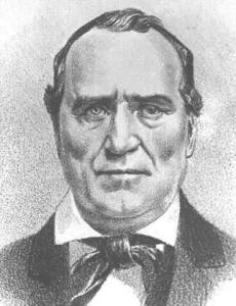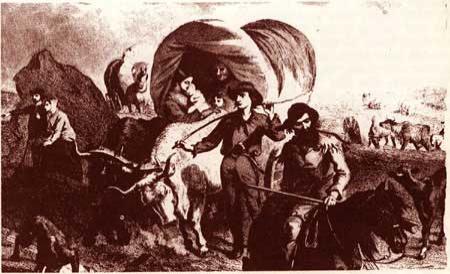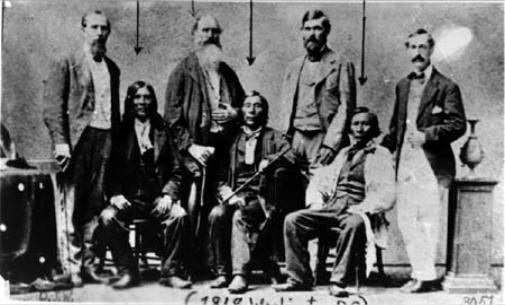
Early Life
Robert Newell was born in Butler County, Ohio, on March 30, 1807. During his teens, Robert was apprenticed to a saddle maker, but never made a saddle of his own. After the death of his father, he headed to the Rocky Mountains at age 22 with Joseph Meek, a lifelong friend, where he proved himself a legendary mountain man. Robert was so skilled at rudimentary surgery and healing, that he was thereafter called “Doc” Newell even though had no formal medical training. He was known among his colleagues as a fine orator and the “go to” person when the early pioneers were encountering Native American tribes along the many early journeys west. There are accounts of Robert Newell conferring with tribal leaders while battle was ensuing to discuss options on both parties moving forward and co-existing. By the end of the Fur Trade Era he had become a famous fur trader, trailblazer, and explorer. His first wife, “Kitty, “was the daughter of a Nez Perce sub-chief. They had five sons together. Kitty’s sister was later married to Joseph Meek.
Trail-breaking to Oregon

With their young families in-tow, these early pioneers were one of the first three families to pave the way for the original Oregon Trail route to the Willamette Valley along the Columbia River. No one had successfully taken wagons over the mountains before. Although the wagons were worse for wear, the trail was blazed. In 1842, he and Andre Longtain (a French mountain man who was also in their party west) jointly platted the Champoeg Town site.
Life in Oregon
Kitty passed away due to a chronic illness in 1845. Her gravestone honoring her contribution to Oregon history is located in the Champoeg State Park Heritage Area.
In 1843 Robert Newell voted for the divide that established the Provisional Government that led to Territorial status and Oregon’s eventual statehood . That vote was held at the Hudson Bay Company store in Champoeg Town which was located where the Pioneer Memorial Pavilion is now in Champoeg State Park.
Robert Newell’s second wife was Rebecca Newman of Salem in Marion County. They married in 1846 and lived on the plains at Champoeg on land Robert Newell had purchased in 1844. Robert and Rebecca built their “house on the hill” in 1852 after Robert returned from the California gold mines. Rebecca gave birth to 11 children, dying two weeks after the 11th child was born in Lewiston, Idaho. Robert married his third wife, a widow, Jane Ward, in 1869.
Robert Newell served ably and with distinction during all of Oregon’s early growth. He helped draft all three early Constitutions and was a wealthy, successful businessman and popular civic leader who often entertained at his home. He was a director of the first literary society and the first newspaper. He owned two commercial keel boats that served between Oregon City and Champoeg Town. He was the first Worshipful Master of the Champoeg Masonic Lodge that met in his home after the devastating 1861 flood. He almost paupered himself helping the victims of the flood. His house was the only surviving structure at Champoeg.
Later Life

Robert lived at Champoeg until 1866, when the Nez Perce Tribe ceded to him a 5-acre plot of land in Idaho. He was named Nez Perce Indian Agent and moved to Lewiston, Idaho, where he became a special commissioner and interpreter to the Nez Perce. Robert Newell died in 1869 and is buried at Lewiston, Idaho.
This all is just a brief account of the amazing life of Robert Newell.
For the full story of this colorful pioneer, read “The Career of Robert Newell Oregon Pioneer” by George Guy Delamarter is available at Newell Pioneer Village Gift Shop. A youth version, written by local author Katrin Richter is also available.

